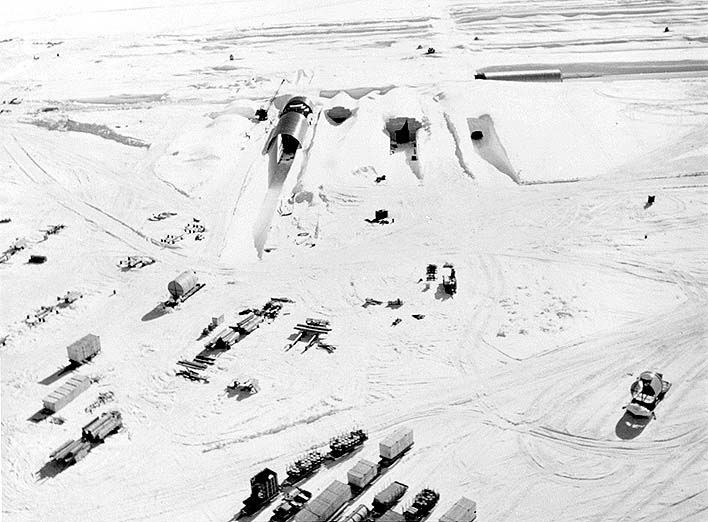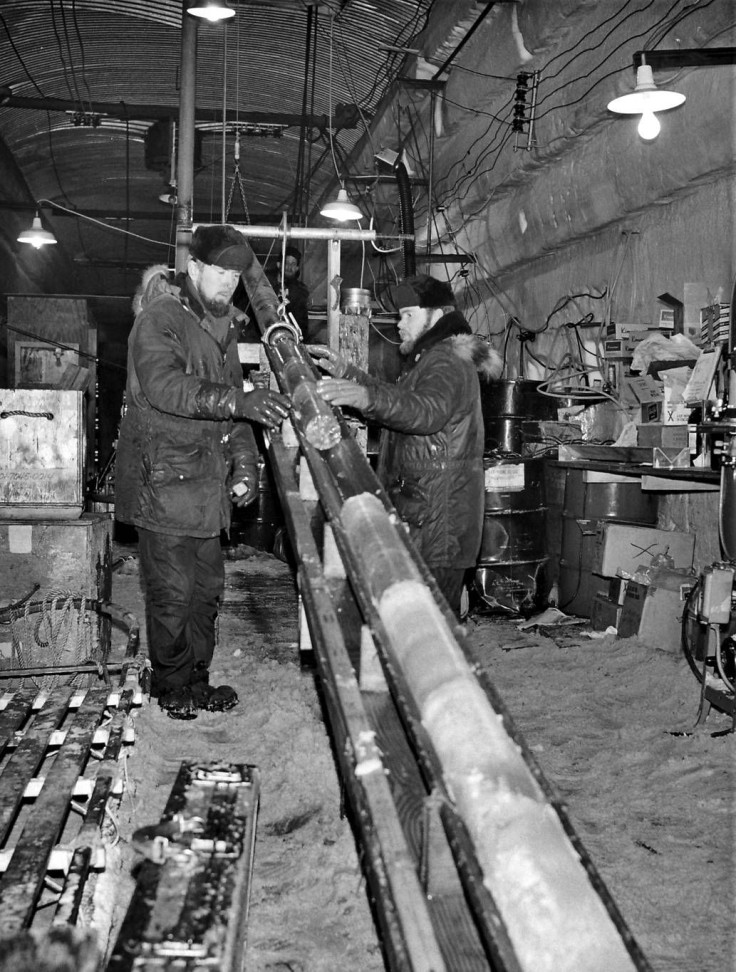Climate Change Could Reveal Toxic Waste From Former US Military Base In Greenland

Anthropogenic climate change — changes in global weather patterns attributable to human activity, particularly due to carbon emissions — has been projected as a cause for health, social and economic concerns. But, a new study published Thursday explored a potential political dispute between countries that have been allied for decades — the United States and Denmark.
In the Cold War era, the U.S. had built military outposts at various strategic locations to counter the perceived Soviet threat, including nuclear installations that were capable of delivering nuclear warheads to the erstwhile Soviet Union. The now-largely autonomous Danish territory of Greenland housed multiple U.S. military bases, some of which have since been abandoned.
Camp Century was one such base which was set up in 1960 with the objective of housing nuclear missiles that could reach the Soviet Union. About 150 miles inland from the more famous still-functional Thule Air Base, the subterranean facility also housed the world’s first portable nuclear reactor for power generation.
In 1963, geologists working at Camp Century realized that unsteady ice conditions, a result of glacial movement, would destroy the camp within a couple of years. Consequently, the base was evacuated in 1965, the nuclear reactor was moved and the entire facility was closed and abandoned in 1966. It was assumed that the camp’s infrastructure and waste would simply be covered by ice for eternity under the constantly accumulating snowfall.
However, citing climate change, a study published in the journal Geophysical Research Letters Thursday argues otherwise. Its authors say: “Net ablation would guarantee the eventual remobilization of physical, chemical, biological and radiological wastes abandoned at the site. While Camp Century and four other contemporaneous ice sheet bases were legally established under a Danish-U.S. treaty, the potential remobilization of their abandoned wastes, previously regarded as sequestered, represents an entirely new pathway of political dispute resulting from climate change.”

The paper discusses the increasing loss of ice from Greenland, a process hastened by recent climate change and “readily observable in northwestern Greenland” where Camp Century was located. It goes on to say that of the waste from the camp that will surface once the ice over it thaws, “the most consequential waste at Camp Century” is polychlorinated biphenyls, “one of three broad classes of chemical toxins of global significance.”
Among the chemical waste is also estimated to be about 53,000 gallons of diesel, whose storage tanks have likely ruptured with the passage of time. Some of the diesel may still be liquid, and the study predicts “that solid and liquid wastes will reside at depths of 67 and 93 m, respectively, in 2090.”
Radioactive waste — coolant for the nuclear power generator — from the site was dumped in an unlined sump when Camp Century was abandoned. The study said that “while nontrivial in absolute terms, this radiological waste is small” in comparison with nuclear material “accidentally dispersed” after the B-52 crash near Thule Air Base in 1968.
Adopting a “business-as-usual scenario that assumes little deviation from recent trends in anthropogenic greenhouse gas emissions” for the study, researchers “predict increased surface melting in northwestern Greenland through 2100.” They said that the resultant “net ablation at Camp Century would make the eventual coastward remobilization of abandoned wastes inevitable.”
While Denmark was “involved in the planning and environmental monitoring of Camp Century” and there are reports that “suggest Danish permission for the operational disposal” of radioactive waste in Greenland’s ice sheet, “it is unclear whether Denmark was sufficiently consulted regarding the specific decommissioning of Camp Century.”
The study cites the 1951 treaty between the U.S. and Denmark that was the basis for U.S. military bases, including Camp Century, in Greenland to ask if the abandoned waste there remains U.S. property.
“All property provided by the Government of the United States of America and located in Greenland shall remain the property of the Government of the United States of America. … [it] may be removed from Greenland free of any restriction, or disposed of in Greenland by the Government of the United States of America after consultation with the Danish authorities…”
As the possibility of pollutants, thought to be sequestered away for eternity, reemerging from their cryogenic vault becomes more real, countries involved are likely to shift political and legal liabilities to avoid being the host for future potential toxic exposure. “Climate change is thus likely to amplify political disputes associated with abandoned wastes in a variety of settings,” the researchers conclude.
© Copyright IBTimes 2025. All rights reserved.





















